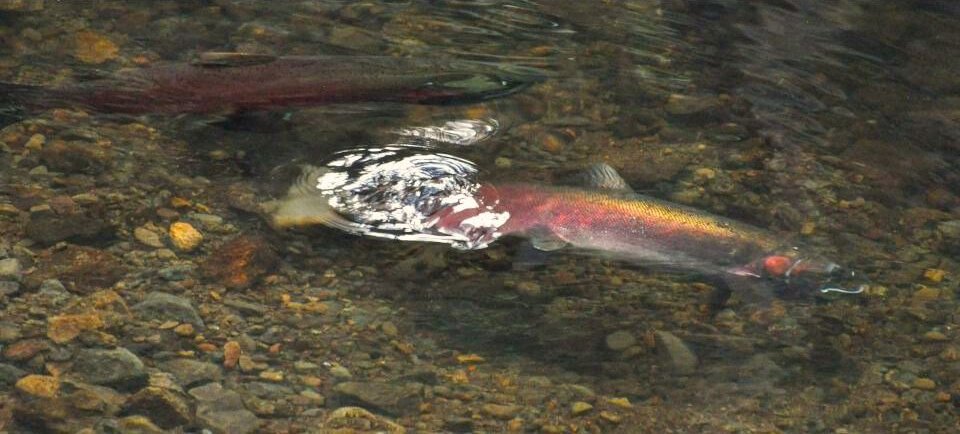
2024 Impact Grant
Turtle Island Restoration Network
Olema, CA
1-year $100,000 Impact Grant (2024)
turtle Island restoration network - olema, california
Lagunitas Watershed Resiliency Project
For over 30 years, Turtle Island Restoration Network (TIRN) has been a leading advocate for the world’s oceans and marine wildlife. Begun as an effort to save hundreds of thousands of sea turtles and other marine species through hands-on conservation, policy change, and consumer change campaigns TIRN over the years grew to include another program focused on an issue close to the organization’s headquarters in the San Francisco Bay Area – California’s endangered wild coho salmon.
The Foundation’s $100,000 Impact Grant is funding work to be accomplished by the Salmon Protection and Watershed Network (SPAWN), a program under TIRN that has produced measurable gains over the past 20+ years through partnerships with state and federal agencies, local organizations, and landowners. TIRN-SPAWN outreach and education programs engage hundreds of people each year throughout the San Francisco Bay Area to learn about endangered Coho salmon and the urgency of saving this species through watershed restoration, native plant propagation, and riparian revegetation.
impact grant project: “Lagunitas Watershed Resiliency Project”
Underwater footage of coho salmon in Lagunitas, CA. These salmon are endangered. Turtle Island's Salmon ProtectionAnd Watershed Network (SPAWN) program is working to protect coho salmon and restore their habitat.
Lagunitas Creek is the largest single run of the Central California Coastal Coho salmon whose population has dwindled to 10% of historic numbers, putting it at risk of extinction. The Devil’s Gulch Creek Subwatershed, home to 25% of the adult Coho spawning population and critical to winter survival of the species, is deeply incised, exposed to bedrock, and depleted of wood (only 20% of the TMDL). The overlay of climate change-related extreme temperatures, heavy rainfall and high winter flows, and warm dry summers with persistent drought are exacerbating the subwatershed conditions.
The Lagunitas Watershed Resiliency Project (LAWRP) will improve critical spawning, winter and summer rearing, and out-migration smolt habitat by installing approximately 150 large woody debris structures (Post-assisted Log Structures or PALS) across one mile of Devil’s Gulch Creek. These structures will consist of existing logs, downed trees, and other woody debris and will be built by pulling, dragging, winching, and toppling trees and logs into the channel. Additional wood debris and wooden posts will be driven into the channel to create dynamic jams capable of adapting to changes in sediment supply, stream velocity, and riparian vegetation. This low-tech process-based restoration concept will use only power equipment and hand tools and has been proven to be a cost-effective approach to improving instream and floodplain habitat. The work will be completed by volunteers.
Introducing large wood structures into the Devil’s Gulch Creek subwatershed will increase channel roughness to slow flows during heavy rains and create pools where fish can find refuge, conserve energy, and find food during even high-water events. These structures will constrict the channel, forcing scour and creating areas where cool water can persist long into summer, and critical for salmon survival during periods of drought. The structures further provide instream shelter and refuge from predation and improve insect habitat to increase prey for the Coho. The wood jams slow flows across floodplain areas, allowing salmonids access to low-velocity side channels with saturated soils, increasing the availability of prey. By reducing stream velocity, the PALS reduce stress on the channel bed, improving the survival rate of salmon eggs deposited in the stream gravels.
The project will involve local communities, including the underrepresented and underserved in the San Francisco Bay Area, by offering public meetings prior to and during project implementation, weekly and monthly volunteer opportunities, school programs to bring students to the restoration work sites, workshops for the growing trend of low-tech, process-based restoration, and public tours of the restoration sites for State Park visitors.


